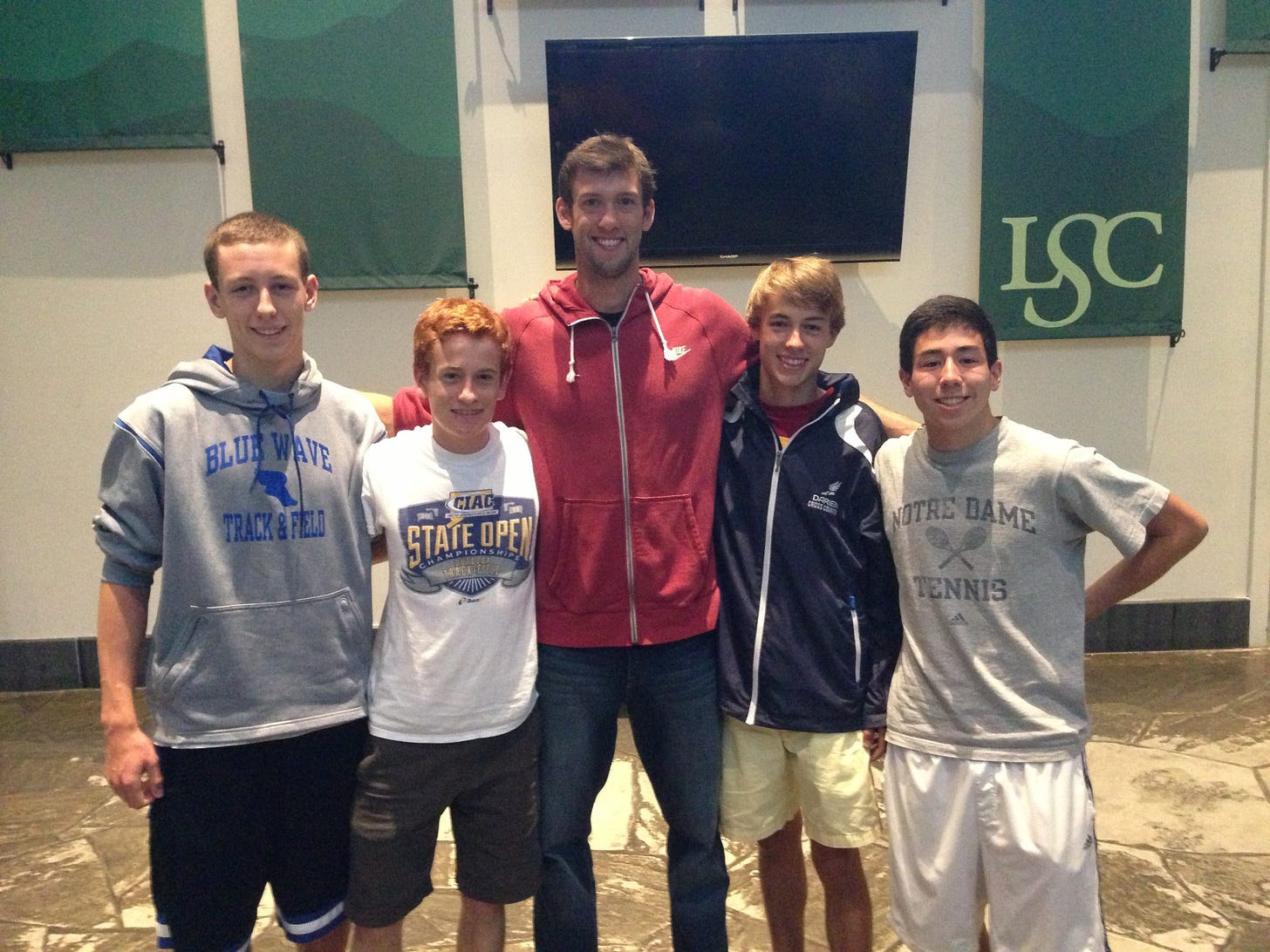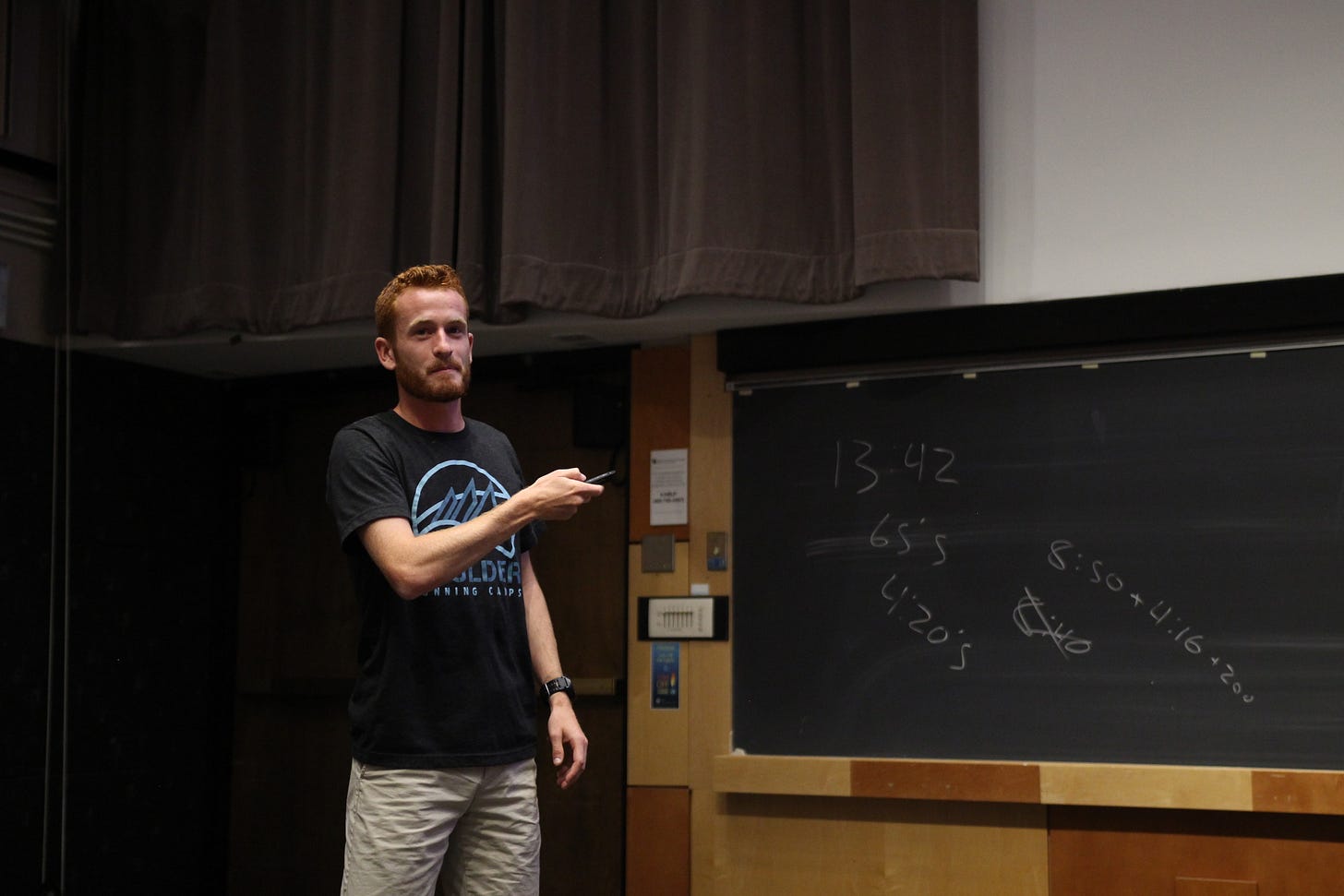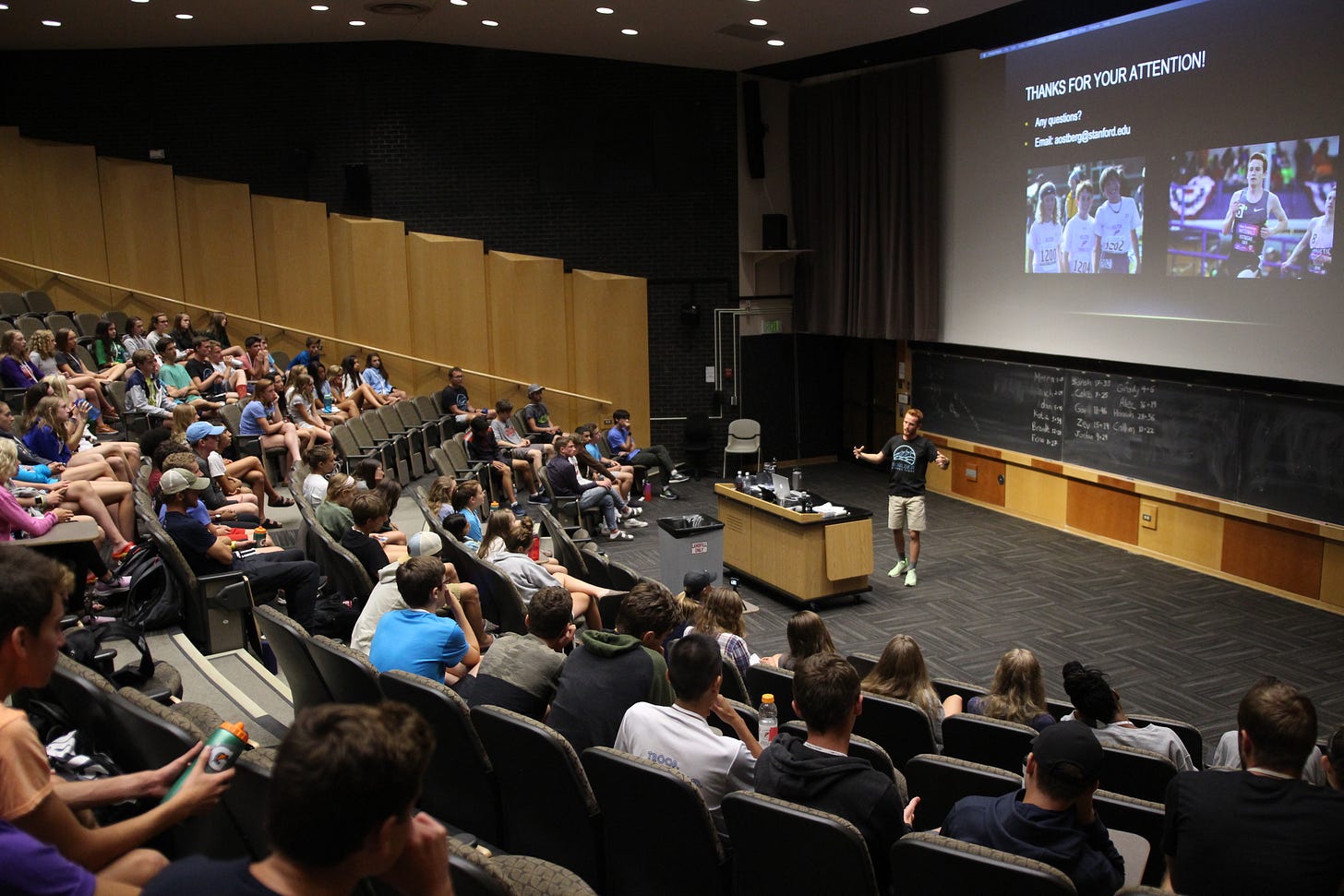As soon as I hit send and closed my email inbox, my jaw clenched, and my heart started beating faster. Am I ready for this? Are my ideas good enough to share with the world? Doubt crept in.
Just minutes earlier, I had emailed Jay Johnson, director of the Boulder Running Camps. I’d attended his camp in 2017 and planned to return that upcoming summer as a counselor in 2019. On a whim I can’t fully explain, I suggested I be the keynote speaker during week 3.
I remembered sitting in a similar audience years earlier as a 15-year-old high school runner going to my first “sleep-away” camp. Nestled in the mountainous terrain of Lyndonville, Vermont, the Green Mountain Running Camp hosted an incredible roster of Olympic-level athletes who shared their stories and insights. I sat in the audience, wide-eyed and captivated. Those moments were transformational for me. I wanted to pay that experience forward. I already had a slide deck called "10 Things I Wish I Knew as a High School Runner" from a talk I gave to a local team. It was well-received in front of an audience of 10 people. The content felt like the right fit.

Running had given me so much: a scholarship to Stanford, deep friendships, and a relentless work ethic. But it had also tested me: surgery, stress fractures, sleepless nights. Those setbacks didn’t diminish my love for the sport; they deepened it. They strengthened my resolve and gave me a greater appreciation for everything running had given me. My parents used to say, "To whom much is given, much is expected." This felt like my chance to give something back.
The Ripple Effects
Jay responded enthusiastically that same day. I refined the presentation and practiced it until I could deliver it by memory. When the time came, I spoke for 35 minutes, took questions, and handed out a one-pager with my main points and email address.
In the audience of 300 runners that evening, one of them was Patrick Anderson, a precocious runner from Pennsylvania who would go on to commit to UNC the next year. I had no idea at the time, but we would become teammates, friends, and training partners. Within days of meeting in North Carolina, Patrick told me how much the presentation meant to him and how much he had learned.
Patrick is not only a phenomenal runner but also one of the toughest and most resilient athletes I’ve ever met. Check out his inspiring story on this episode. That moment served as a powerful reminder: when you put good work into the world, you never know who will be listening. The upside of pressing send isn’t just personal growth, it’s the chance to impact someone who may cross your path in a meaningful way. The ripple effects of that one talk became tangible in my day-to-day life, and that lesson continues to shape how I think about sharing ideas.
Jumping back in time, a few months after camp, Jay invited me to appear on his podcast to share the same message with his coaching community. I hesitated. I was 22, had never formally coached, and felt unqualified. But he assured me it would bring value.
The conversation lasted over two hours. I rambled, but at least it was with enthusiasm. Toward the end, I shared my email address again. Sahil Bloom once said that original content acts like a magnet, constantly working for you without your direct involvement. That podcast was my first magnet.
The First Email
A week later, after a grueling cross-country workout, I found an email in my inbox. A high schooler had listened to the podcast and had questions about training and sports psychology. I almost archived the message to return to my midterm studying, but his thoughtfulness pulled me in.
That student was Dominic Schlueter. At the time, The Running Effect podcast didn’t exist. But Dominic was determined to turn his what-ifs into reality. We began exchanging emails. Over time, we recorded nearly 20 podcast episodes together—hours of conversation, some buried in the internet archives, but each one another magnet.
When Luck Finds Preparation
Fast forward to 2023. I was living in Chapel Hill, working in healthcare consulting. I had left California to follow my college coach, Chris Miltenberg, to North Carolina, where he was now the director of Track and Field / Cross Country. I still showed up to UNC practices, trained hard, and thought about coaching, though no opportunities had surfaced. Then, in December, my former teammate, friend, and pro runner Sean McGorty called.
Jerry Schumacher was hiring an assistant coach for the Bowerman Track Club. Sean had heard me on The Running Effect and believed I might be a good fit for the coaching role, even though I had no formal experience. A week later, Jerry called with a job offer.
Now, I coach top-level Nike athletes, learning from the best athletes and coaches in the world. It’s been the experience of a lifetime.
The Second Send
When Dominic pitched the idea of this newsletter, I hesitated again. The same doubt returned: Am I ready? Do I have anything new to say? I'm a private person by nature. But I couldn’t find a compelling reason not to do it.
When I reflected, I realized I was afraid to trade the dream of success for the reality of feedback. My ideas are never challenged in my head. But publishing forces clarity. It creates accountability. It also facilitates connection.
Every time I’ve taken the leap to share publicly, something good has followed. And selfishly, each published idea expands the surface area for luck to find me.
Why This Newsletter Exists
This newsletter is an evolution of that first keynote in Boulder—a way to give back at scale. It isn’t meant to be prescriptive. Some lessons you have to live to learn. But others? You can learn from those who’ve been there.
Runners often repeat the same mistakes, not from lack of effort but from lack of insight. My hope is that this newsletter becomes a place to:
Reverse engineer high performance
Learn vicariously from the mistakes I’ve made
Ask better questions
Balance strategy and tactics
Sun Tzu said: Strategy without tactics is the slowest route to victory. Tactics without strategy is the noise before defeat. We need both.
This newsletter is about mastering the how and the why.
It’s a conversation about running, yes—but also about mastery, self-awareness, adaptation, and what it means to pursue excellence without losing yourself in the process.
If you’ve ever felt stuck in a plateau, questioned your “why,” or sensed there must be more to the story than the usual advice, you’re in the right place.
I don’t know where this journey will lead. But I trust the process. Life can only be understood backward, but it must be lived forward. Again and again, life has shown me what can happen when you press send.








Love this! Still remember your talk in Boulder quite well - you never know who you will impact or when you may cross paths again! Excited to hear more of these stories!!
Thank GOD I found a site that Alex Ostberg shares his thoughts and ideas. He is a machine!!